-
Nadine Labaki: Where Do We Go Now? (2011)--ND/NF
NADINE LABAKI: WHERE DO WE GO NOW?--ND/NF
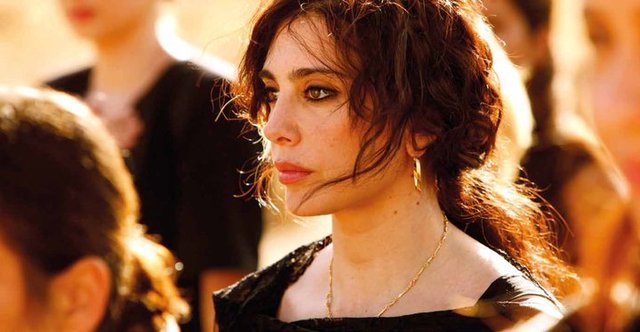
NADINE LABAKI IN WHERE DO WE GO NOW?
A nice fantasy
Lysistrata with song and dance and hashish cookies is what Nadini's sophomore effort is, a benign fantasy of how a Lebanese village might stop its deadly Muslim-Christian clashes if all the women just switched religions and hid their men's weaponry after getting them very stoned. The film is a charmer -- it's sort of as if the gut-wrenching Incendies were redone as a Don Camillo tale directed by De Sica with help from the Taviani brothers -- and it's the kind of movie you get if you mix up handsome young men, pretty women, lusty old ladies and chubby geezers in a grab bag of different physical and personality types located in a quaint hillside town. Labaki herself is one of the stars and she's a looker. (Her star-crossed would-be Muslim beau is played by Claude Baz Moussawbaa.) There's able cinmatography by dp Christophe Offenstein and plasing music by Khaled Mouzannar. The screenplay is from Thomas Bidegain, who collaborated with Jacques Audiard on the script of The Prophet.
Everybody gets together, plays together, sits in the localcafe together, watches a scratchy TV together. Just outside town there is the village cemetery, full of handsome young men, with the Christians on one side and the Muslims on the other. Though the women have taken over there's still a pair of corpses to be buried at the end, one Christian and one Muslim, and that's what the title is about. Since they women have switched religions ("I'm on the other side now"), which side do the coffins go to? it is a nice fantasy.
Where Do We Go Now? has hectares of charm and local color. Its Lebanese Arabic is the saltiest language imaginable, especially what comes of those feisty old dames' mouths. There is some Russian and English too, which comes from a totally unnecessary, and not at all glamourous, little troup of Russian women brought in to entertain and distract the men. As if we needed another distraction. Labaki likes to keep new stuff happening. She showed that in her debut, Caramel, which was less ambitious and a little more successful, and told a ronde of love and family stories centered on the employees and customers of a Beirut Beauty parlor. The only trouble with this method is that the audience never identifies much with any one person. In this new film we may have trouble even identifying members of the ensemble at times, especially with the young men, who don't wear outfits to tell us which religion they belong to.
The lack of strong emotion is more evident when the sectarian strife built into the Lebanese DNA takes its toll and the tone turns tragic. As Alissa Simon of Variety wrote, this "genial and at times genuinely inventive" film tickles the funny bone' but never quite 'taps the emotions.' She also notes "problems of tone, pacing and performance." Nonetheless when it played in Paris last fall (as Maintenant on va où? it was well received (Allociné 3.7, with even more enthusiasm from the public), and the charm goes a long way. This was also Lebanon's entry into the competition for the Best Foreign Picture Oscar, but not a finalist.
I originally reviewed Where Do We Go Now? when I saw it in Paris (Oct. 27, 2011). As I pointed out, reviewers with several of the more sophisticated French publications were cunimpressed at Sept. 14 release time, though though did play in a lot of locations (and Caramel had had a French run in 2007 and a US one several years later). This is a feel-good movie with enough likability to carry it through a theatrical run, and may be enjoyed for years to come, but though it has lots of color, many of even the best scenes are derivative and not memorable.
Where Do We Go Now is included in the March 21-April 1, 2012 New Directors/New Films series, put on in New York by the Film Society of Lincoln Center jointly with the Museum of Modern Art. It's the opening night film. Showtimes:
Wednesday, March 21st | 7 PM | MoMA
Wednesday, March 21st | 8 PM | MoMA
(Where Do We Go Now? has been picked up by Sony Pictures Classics for US release, as has the other press screening of today, Garth Evans Indonesian-language martian arts action film The Raid.)
Last edited by Chris Knipp; 07-23-2014 at 07:14 PM.
-
Gareth Evans: The Raid: Redemption (2012)--ND/NF
GARETH EVANS: THE RAID: REDEMPTION (2012)--ND/NF
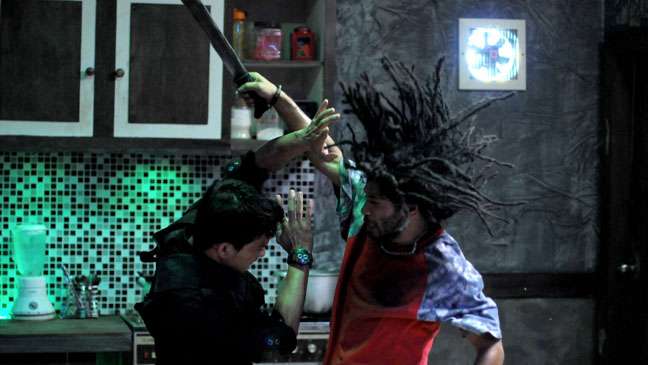
The ultimate fight picture?
The Raid runs for 100 minutes. Be prepared. Most of it is violent fighting in a dark ghetto building 15 stories high. Fighting with automatic weapons and pistols but mostly with machetes and knives and hand-to-hand, to the death, on and on, to the last man. This is as dark, intense, violent, and extreme a movie as you will ever be likely to see. And for about 90 minutes you are trapped in the halls and apartments of that grey, dingy building with vicious and desperate men. If that appeals to you, have at it. If not, please don't come to watch this movie.
A SWAT-style attack squad of policemen comes to rout makers of illegal drugs housed on the top floor of a tall building. But some of the squad are tyros, inexperienced in such raids. And they are expected. The building is dark and dingy but fitted with a full system of security cameras. It also has a speaker system. And it seems to be crawling with lithe, long-haired men in loose, greasy T-shirts, carrying long machine guns and out to kill anything that moves. Not only are many of the policemen quickly killed, but for the rest, the escape route seems blocked. When the cops have been decimated and only the strongest survive, the lithe bad buys keep coming on one floor after another, carrying knives and out to kill. They keep on coming and coming. Only a handful of cops survive and make it to the top floor. And their fight is the longest.
"I am the guy that makes stunt performers take multiple kicks to the head for what I hope is a captivated audience," says Gareth Evans, a Welshman who as a child wanted to be Jackie Chan. He was later a fan of Die Hard and Assault on Precinct 13 -- "films that used a single building for unyielding cinematic geography while creating feature-length tension." Then he went to Indonesia and learned about Pencat Silat, a traditional kind of martial arts fighting using the body and blades and teamed up with Iko Uwais, a young, almost baby-faced champion of the sport. He first starred in Evans' debut, Merentau. The Raid will seal Evans late-night martial arts movie cult status. In The Raid, Uwais plays Rama, a young cop with a pregnant wife. And then there is Joe Taslim, who plays Jaka, and Yaya Ruhian, who plays Mad Dog.
The aim is to bring down the calm, sinister drug lord on the top floor, Tama (Ray Sahetapy). He watches the battle with Andi (Doni Alamsyah) and Mad Dog on his battery of screens. A complication, besides the fact that a lot of the cops are unfit for this kind of urban warfare, is that the raid instigator, Lt. Wahyu (Pierre Gruno), is corrupt and may have devious motives that can lead to the failure of the operation.
While Tama's ragtag army has downed most of the cop squad, it emerges that Rama is a relentless superman. After a while the focus is on his continual downing of opponents. There is also a wounded cop whom a building resident with a sick wife takes in, hiding him and Rama till Mad Dog breaks in.
Evans skillfully structures the action (which was created interactively, the stunt men and martial artists creating their fights according to what he calls "a D.I.Y. method of fight choreography," with the film team, cameramen, and editors) so that it rises and falls, with changes in rhythm and what he calls "breathing space" -- calculated pauses so the audience can catch its collective breath. For the faint of heart this is simply unpleasantness, but for those who like martial arts movies, this is a new kind of pleasure. The fight choreography is superb. Pencat Silat is a rough kind of fighting, with running and tackling and improvisation of weaponry. There is also some judo, where brawn is more a feature. There are leaps and twists. Moti D. Setyanto's production design makes use of the building, where holes are punched so men can jump or climb between floors, and there is the feel of an endless but inescapable labyrinth.
It's awesome, it's relentless, and toward the end it's a bit absurd, how several guys can get beaten up, then untied, and fight tirelessly in a threesome for endless minutes, then run away. The most tireless bad guy fights for minutes with a candle driven into his throat. There is a satisfying finale involving capture of the crime boss, punishment of the corrupt cop, and a reunion of brothers who are on opposite sides. All ready for Berandal ("Thug"), the sequel, which is coming, with Uwais again as Rama. The director sees The Raid now as the first of a trilogy. Obviously Evans, whose team for shooting, editing, sound design and two music tracks for Indonesian and western audiences is crack, is in deep debt to Hong Kong. This would not exist without that. But the dark Kafkaesque ironies of the action evoke Park Chun-wook and the Korean revenge film of recent decades too.
The Raid: Redemption or Serbuan Maut presented at Toronto, followed by Sundance and SXSW. It has been picked up by Sony Pictures Classics. US release will be March 23, UK May 18, 2012. It is included in the MoMA/Film Society of Lincoln Center New Directors/New Films series, to be shown:
Thursday, March 22nd | 6 PM | MoMA
Thursday, March 22nd | 11 PM | FSLC
Last edited by Chris Knipp; 03-05-2012 at 09:35 PM.
-
Mohammad Rasoulof: Goodbye (2011)--ND/NF
MOHAMMAD RASOULOF: GOODBYE (2011)--ND/NF
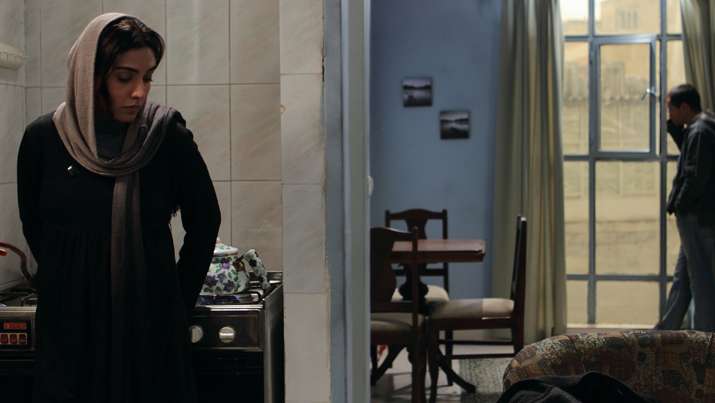
LEYLA ZAREH IN GOODBYE
Another quintessential Iranian picture
Mohammad Rasoulof, who has done intriguingly poetic films like Iron Island (2005) and The White Meadows (2009), has come down grimly close to home with this claustrophobic, cold study (everything is blue gray and nearly everything is close up and indoors) of a woman lawyer trying to get out of the country. Like Rasoulof himself, she is having visa problems. Like the woman in Asghar Farhadi's recent much honored A Separation, she wants to leave Iran. Her life has been shut down by the regime. Her right to practice law has been taken away and she has lost her cases. Her husband, a journalist, has had his newspaper shut down and is operating a crane on an industrial construction project in the south of the country. She has gotten pregnant. She was told to by a man we never see, who takes money to help people leave. And it turns out late in the film that her child will have Down Syndrome. What a nightmare! But she only cries once, and that is muted, her shoulders shaking as she lies face down on the bed.
Leyla Zareh, as the lawyer, with her beautiful long-suffering face, looks like Ingrid Bergman. It's good that she's beautiful, because we have to spend a lot of time looking at her. Her little apartment contains nothing but her and a turtle. Across from it is the airport, and that and the turtle who escapes after she puts it in a larger container and apparently dies or disappears, are blatant in a way that Rasoulof has not been before. His experience has robbed him of his detachment and his cinema has lost its poetry.
Goodbye is a punishing film, impeccably made, perhaps, with its clean looking digital images, with a few nice shots and enough specific detail to make you, if you can stand it, pay attention. But it's basically very thin on artistry, though the stress on chilly office putdowns make this seem another quintessential contemporary Iranian film. After seeing it at Cannes Mike D'Angelo gave it only a 49 and wrote: "More political statement than movie. Even as a movie it’s on shaky ground, with the symbolic turtle and so forth." But it is a movie, a conventional movie, almost an instructional film. (If it were only that it would be a notable one, because instructional films don't usually get actors as good-looking as Leyla Zareh). No, it's a little more than that but a lot less than Jafar Panahi's This Is Not a Film, which was also at Cannes, and linked with it because they were both smuggled in and added to the festival at the last minute. Both men were arrested with more than a dozen others at the same time, and jailed, but unlike Panahi, Rasoulof has not been officially banned from making films. Ironically, Panahi, banned from filmmaking, made a film that is self-referentially witty and ironic and strong. Rasoulof, not banned, has made someting blatant and obvious and tedious. Farhadi, well, he has made a film that to me is annoying, but it is intricate and neatly constructed and a picture of Iran's problems that is, relatively, warm and full of life, but to say that is to see just how chilly and empty Goodbye is.
Commenting from Cannes on mubi's online Notebook, Daniel Kasman seems to share my dissatisfaction. He finds Goodbye repetitious, lacking in deput, "a cyclical dirge," and sees it as "cloaked and variably choked by both the clandestine nature of the film's production and the hushed and desolate story it tells." Yes, we must applaud both Panahi and Rasoulof for their smuggled-out cries of protest against their country's repression. But Panahi's film is intriguing and this one is numbing. Simon Abrtams calls it "too literal and pat." Nonetheless, predictably, there were raves, and Alissa Simon in Variety predicted that "fest and niche arthouse play can be expected."
Goodbye was also released in France in September and shown at Toronto and in other festivals. It was watched for this review at a press screening for the MoMA-Film Society of Lincoln Center New Directors/New Films series.
Goodbye (Bé omid é didar, in Farsi, 104 min.)
Thursday, March 22nd | 8:30 PM | FSLC
Saturday, March 24th | 1:00 PM
-
Terence Nance: An Oversimplification of Her Beauty (2012)--ND/NF
TERENCE NANCE: AN OVERSIMPLIFICATION OF HER BEAUTY (2012)--ND/NF

NAMIK MINTER AND TERENCE NANCE IN AN OVERSIMPLIFICATION OF HER BEAUTY
Seduction through analysis of seduction
Terence Nance is a charming young African American man with big hair and a big heart. He wanted to give the latter to a young lady called Namik Minter, and this feature film, said to have been 3 hours long at one point, then honed down to 94 minutes through help from Sundance, was designed to woo Namik by delineating the nature of his romantic affection for her (he tends to fall into flowery formal language when talking about his feelings and his romances). The many, sometimes too many, voiceovers, often in the second person, describe and analyze. The topic may seem repetitive, but Nance makes it interesting by the appeal of his looks and personality and by the constantly varying visual styles, by interrupting and subdividing his visual texts, and by including by way of further description and analysis many animated film passages, these executed differently too by a variety of hands, following his storyboarding. If Terence Nance didn't succeed in wooing Namik, he may very well seduce you with this highly original first feature, which is bursting with ideas, human warmth and creative energy.
Terence grew up in (by his own account in the film) an exceptionally warm and healthy family -- which (though he does not mention this) was in the strong black community of Dallas. He thereafter received his undergraduate degree from Northeastern University in Boston, Mass., made his first film while studying at Cape Town University in South Africa and received his MFA from New York University in 2007. He also lived in Paris for two years, 2007 to 2009, and now lives in Brooklyn. Some of the action, including the meetings with Namik, appear to take place in NYC. He shows himself working as a street musician with a guitar and describes himself as having a hard time waking up to get to work on time.
But the central event is an evening when he had been expecting Namik to come to his place after work, when he learns she isn't coming. In an interview online with an LA blogger called Rinny Riot he says, "I had what I thought was a complicated situation with a woman, that inspired me to write the film. So my original intentions probably amounted to some sort of need to consecrate or validate a dying romance." The original smaller film-within-the-film was called "What Would You Feel?" It visually, in multiple alternate versions, restages the expeience of rushing home from work and learning that his would-be beloved (who turns out to be Namik) is not coming that evening and each time ends with the rhythmically repeated question, "What would you feel?"
He got Namik to play herself. And somehow this takes her by surprise, or the experience of seeing the reenactments on screen before an audience of a hundred people, including many of her friends, is a bit of a shock to her. He interviews her about this experience during the course of the larger film. All of this and the complex animated films-within-the-film can be seen as wooing Namik, but in the end he sums it up by saying "in simple English, 'I got friend-zoned.'" He has already discussed at length how little a young man wants a young woman in whom he is interested to consider him a "friend."
The Variety interview suggests Terence adds "vaguely New-Wave style" to his arsenal of seductive techniques, and this is true even if unintentional (the two years in Paris may contribute). At any rate the force of this young filmmaker's potential surely comes from the "omni-directional creative energy" he describes having when in film school he was spray stenciling "FLY" all over the city, making T shirts, and making music, and the fact that he doesn't pigeonhole himself as a director.
In the film he moves on from the incident, which he thought he could depict in five minutes but ran to three hours and took up years of his time, to (justifying the time spent) a film that analyzes an archetypal "romantic-ish" relationship, and also to goddess-worship, to the valuing and use of "emotional memory," in other words, to romanticism itself.
In MissRiot's blog interview Terence Nance is articulate and righteously concerned about strengthening the creative role of African Americans in film. "Learn your craft to competency but learn your voice to mastery," he says, addressing aspiring filmmakers of color. He seems to be doing that, and for all we know he might be the next Spike Lee. This also reminded me of another strong memorable young black film about romance, Barry Jenkins' 2008 Medicine for Melancholy (SFIFF 2008).
An Oversimplification of Her Beauty debuted at Sundance, then was shown at Rotterdam. In March it shows in the MoMA-Film Society of Lincoln Center series New Directors/New Films on the following dates:
Saturday, March 24th | 4:15 PM | FSLC
Monday, March 26th | 9 PM | MOMA
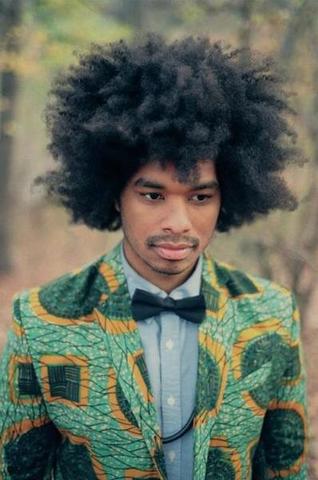
TERENCE NANCE PROMOTIONAL PHOTO
Teaser for the film: here .
Last edited by Chris Knipp; 07-23-2014 at 07:16 PM.
-
Roschdy Zem: Omar Killed Me (2011)--ND/NF
ROSCHDY ZEM: OMAR KILLED ME (2011)--ND/NF
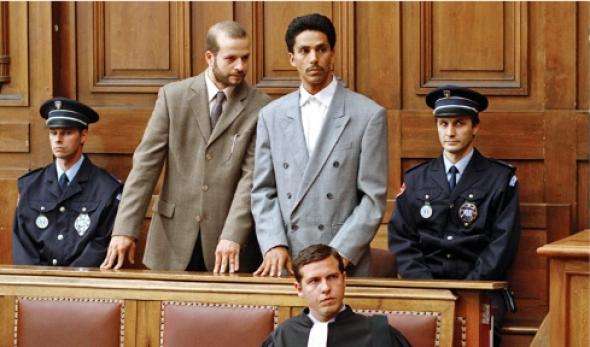
NACER CHERNOUF, SAMI BOUJILA IN OMAR KILLED ME
Injustice to an Arab in a French court
Omar Killed Me/Omar m'a tuer is a good but not great film about a familiar theme: a man framed for a crime he didn't commit, whom people struggle to exonerate. There is an angle of class and racism because the man rushed to a conviction in a French court is a poor Moroccan immigrant, illiterate in Arabic as well as French and hardly able to speak or understand French. The most vivid message is how helpless an inarticulate person must necessarily be in a courtroom, despite in this case having famous lawyerrs. He is put away for the murder of a wealthy widow for whom he worked as a gardener. The veteran French actor Roschdy Zem, himself the son of Moroccan immigrants, chose this theme for his very creditable, but not dazzling directorial debut. One can see why he chose this subject, but one wishes he had waited for something better. Sami Boujila, another big French actor of Arab descent (in his case Tunisian) plays the role of Omar Raddad, the protagonist with great understated power. The costar is the ubiquitous Comédie Française star Denis Podalydès, cast as the slightly oddball writer Pierre-Emmanuel Vaugrenard, who does a muckraking book about the case that helps get Omar early release from prison -- though he has still not been proven innocent, because the court won't allow the case to be reopened. DNA checks might exonerate him, as it has US death row prisoners in recent decades. It's a story that does not end with a bang.
There is something iconic about Sami Boujila in this film, with his erect posture, his pompadour, his broad-shouldered, cheap suit jacket, his blank, stoical stare. The challenge of the role is that Omar Raddad isn't initially at all an interesting character. He's quite inarticulate in French at first, and tight-lipped in Arabic too. He emerges slowly. So does the case, and its secrets never come out. Yes, it's obvious that Omar isn't proven guilty. The blood-message, "Omar m'a tuer," in ungrammatical, probably written by a strong, untutored murderer rather than the wealthy, well-read lady victim. No fingerprints were taken; there is no real forensic evidence. The murdered woman was inexplicably cremated (probably against her wishes) so further investigation of the murder could not be done -- and so on.
As we would expect, Zem's gets good performances. Boujila is quietly charismatic. Raddad's torments and his desperation in prison, his relations with his father and his family during visits and on his release, provide the main human interest. Vaugrenard is a mildly interesting character, with individual touches, including relations with his working-class girl assistant (Salome Stevenin) that have an edge: but this is a sideshow. The lawyers are important in getting Raddad's pardon too, but they don't get in-depth treatment. The main one, Maitre Verges (Maurice Benichou), one of France's most famous defense lawyers, hardly needs filling out here since his work was examined in Barbet Schroeder documentary Terror's Advocate.
There are lively courtroom scenes. But the weakness is that the effort to prove Omar innocent isn't made suspenseful enouugh. The story itself has this weakness: that Raddad has not been provben innocent, so there's no final payoff, like the accuser's draw-dropping court recantation in another current French miscarriage of justice film, Vincent Garenq's Guilty (Rendez-Vous with French Cinema 2012). Omar Killed Me feels like a great story -- only it's not quite. Zem's "pacing of a thriller" doesn't quite work because this isn't quite a thriller. It's muddled. The film approaches Omar with total empathy, but the failure to prove his innocence conclusively spoils the story of injustice. And the empathy clouds the sense of a mystery to unravel.
A collaborator on the screenplay was Rachid Bouchareb, who co-wrote and direced all the big French-Arab movie actors in Indigènes/AKA/Days of Glory, the 2006 film about the Arabs who fought for France in WWII. The film is based on several books, including Omar Raddad's memoir, Pourquoi moi? (Why Me?). The many cooks did not enhance the broth.
Omar Killed Me opened in France June 22, 2011, to good review (Allociné 3.3); however some key publications, Le Monde, Libération, Télérama, Cahiers du Cinéma, Les Inrockuptibles, were less favorable. It has been in several festivals, including Toronto and Glasgow.
Omar m'a tuer (85min.) is included in the 2012 MoMA-Lincoln Center New Directors/New Films series shown as follows:
Saturday, March 24th 2012 | 6:45 PM | FSLC
Sunday, March 25th 2012 | 7:30 PM | MoMA
Last edited by Chris Knipp; 03-07-2012 at 03:49 PM.
-
Adam Leon: Gimme the Loot (2012)--ND/NF
ADAM LEON: GIMME THE LOOT (2012)--ND/NF
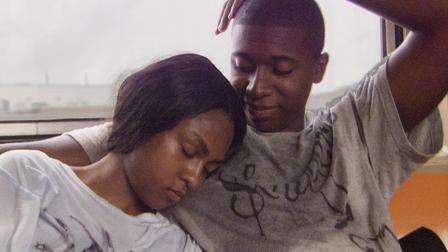
TASHIANA WASHINGTON AND TY HICKSON IN GIMME THE LOOT
Girl-boy graffiti duo wander the summer city
Malcolm and Sofia are two young graffiti artists from the Bronx. The novelty is that they're a girl and boy team. There's a potential romance here that never flowers and remains at the teasing level of friendship. Nothing else quite gets fully off the ground either in this good-natured, naturalistic film ramble through a couple of days in the heat of a NYC summer when the pair are trying to raise $500 for their project to write on or "bomb" a giant apple that is used in Mets games. They figure if they can "bomb" it when it pops up to signal a Mets score, it will be the ultimate coup. Together and apart the pair try various ruses, trying to steal stuff and sell stuff to raise the dough.
As Sofia and Malcolm, Tashiana Washington and Ty Hickson are attractive and natural. It's a pleasure to watch them interact and riff off each other. But the overall action is only so-so. This is like the Larry Clark of Kids and Wassup Rockers without the sex, the edge, or the variety of colorful characters -- in short without much of what makes those Larry Clark films watchable. Malcolm's encounter with a rich girl (played by Bowdoin student Zoe Lescaze) is the most interesting and Clark-esque digression. Viewers may be less willing to put up with the constant profanity without the Clark edge. The slightly faded-looking photography by Jonathan Miller does the job well, and it's particularly impressive in such a low-budget enterprise how smooth the soundtrack of dialogue is as the characters move through crowds, ride subways, and so forth, and even when they are off in the distance.
Adam Leon has said that the greatest challenge he faced was in the casting and that once that was done, he was halfway home. And indeed Washington and Hickson are attractive, winning, and natural. Because of the hot summer NYC 'hood setting and the teen romance in the air I was fleetingly reminded of Peter Sollett's Raising Victor Vargas , but that coming of age tale, deeply rooted in the Dominican community, with family and romance, has more to offer.
Leon has mentioned the naturalistic 1953 NYC picture Little Fugitive as an inspiration. Another good one might be Shane Meadows' 2008 London 'hood ramble Somers Town, which sings and charms. Maybe Leon will get there next time.
Gimme the Loot debuts at the SXSW festival in Austin March 15, 2012. It is also included in the MoMA-Film Society of Lincoln Center series, New Directors/New Films, in connection with which it was screened for this review. The ND/NF showtimes will be:
Friday, March 23rd 2012 | 6:30 PM | FSLC
Sunday, March 25th 2012 | 2:30 PM | MoMA
-
Anca Damian: Crulic: The Path to Beyond (2011)--ND/NF
ANCA DAMIAN: CRULIC: THE PATH TO BEYOND (2011)--ND/NF
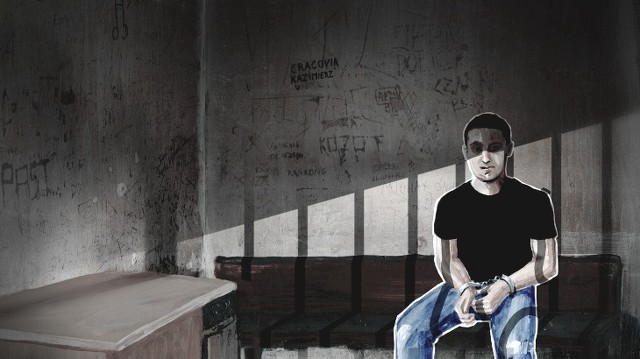
A meaningless death, in animation
Claudio Crulic was a Romanian in his early thirties who was jailed twice in Poland for thefts he apparently did not commit, and the second time he went on a hunger strike that led to his death months later. Despite letters and appeals to the Romanian consul and government and repeated medical examinations, Crulic was ignored by everyone and allowed to deteriorate to a point of no return. It was a scandal that the authorities didn't prevent him from dying in this way, and a minster resigned. The purpose of this 73-minute animated feature is to tell this strange, sad story. The hand-drawn look and the collaged photos plus voice-over first-person narration from beyond the grave by the actor Vlad Ivanov (of 4 Months, 3 Weeks, 2 Days and Pollice, Adjective) contribute to a poetic, Kafkaesque quality. One is charmed (and horrified). and one can identify. A documentary would not have the same effect -- you'd not get the dark humor.
As the voice tells Crulic's tale he seems doomed. For example he says his whole life can be told in a hundred photos. We see the photos, from baby through adolescent raised by female relatives to young adult who quits school early to provide family support, ending with a couple of seaside shots in Italy with his sister. This viewpoint seems reductive. He lists, for example, all the objects that were with him when he died. Before that he lists the objects people bought from outside in Romania. He made a living by purchasing things in Poland and bringing them back to sell. This seems to have something to do with his being considered a thief. The materiality of the account underlines the Kafkaesque absurdity of the life.
After the handling of the body after death and the span of the life have been told, English narration by Jamie Sives, describes the effect of his fast, step by grim step, and the bureaucratic ignoring of his ordeal. The interjection of English as well as the heavy Scottish accent of Siven create a somewhat jarring effect. Animation shows Crulic's last days and death. By the time doctors finally acknowledged the danger his body was in and sought permission to intervene it was too late. A needle punctured his lung, which was already damaged by pneumonia. A long sequence shows his shroud floating away, as if it were his soul. At the end there are some clips from TV about the story covered in the news, the scandal, and the resignation of the government minister.
One might contrast this with the more realistic and physically enacted story of a hunger strike to the death in Steve McQueen's Hunger, in which Michael Fassbender plays the Irish political prisoner Bobby Sands. That was one nation repressing another's independence struggle. This is merely bureaucracy crushing a low income foreign national protesting his false imprisonment. The tragedy of an ordinary man.
Damian deserves credit for treating her subject in a distinctive and artistic way. Hopefully this is a fairly unique incident, but the way a powerless man can be chewed up and spit out by the modern bureaucratic machine is hardly unusual.
Crulic: The Path to Beyond/Crulic - drumul spre dincolo debuted at Locarno and has shown at several other festivals. It was screened for the press for New Directors/New Films (MoMA and the Film Society of Lincoln Center, March 21-April 1, 2012) and is scheduled for public viewings:
Friday, March 23rd | 6:30 PM | MoMA
Saturday, March 24th | 2:00 PM | FSLC
Last edited by Chris Knipp; 07-23-2014 at 07:21 PM.
 Posting Permissions
Posting Permissions
- You may not post new threads
- You may not post replies
- You may not post attachments
- You may not edit your posts
-
Forum Rules





 Reply With Quote
Reply With Quote







Bookmarks